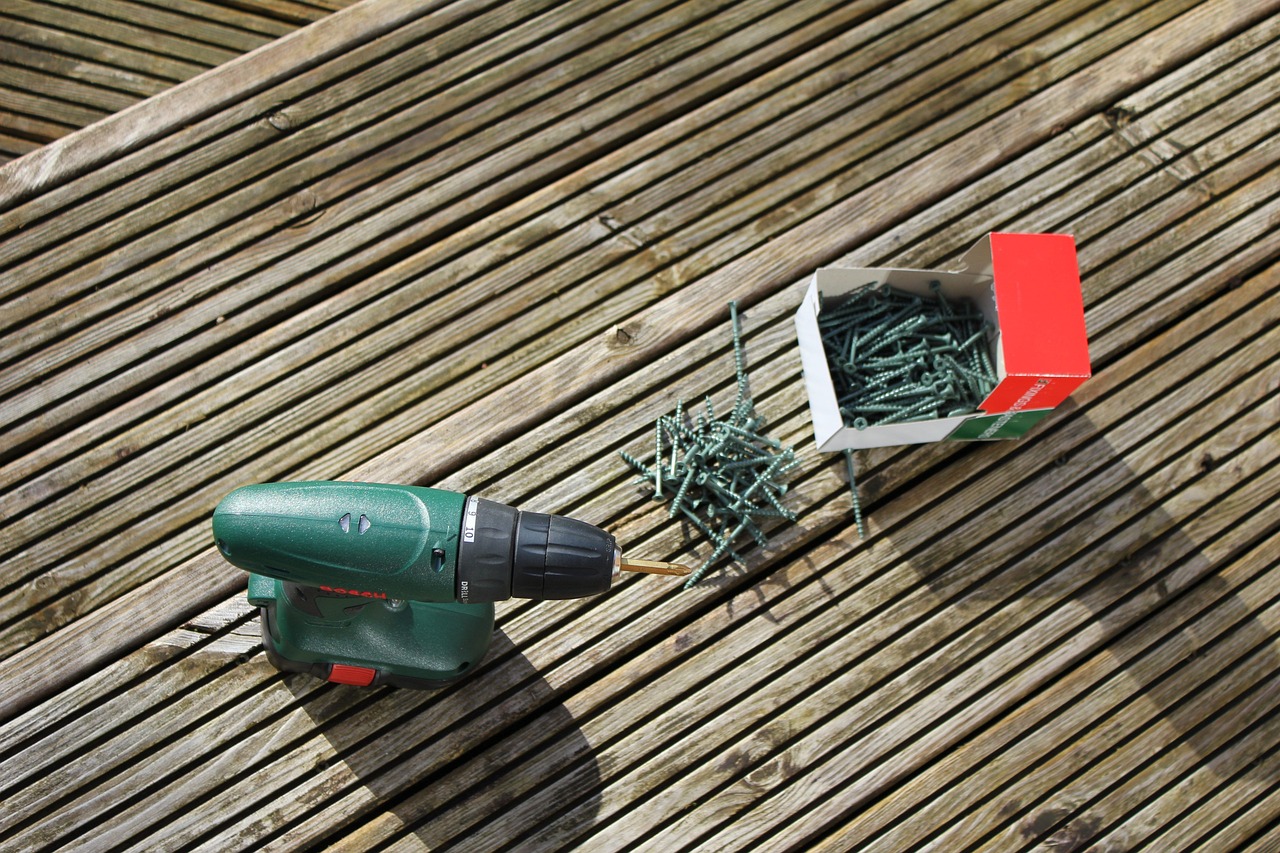Crafting DIY Window Treatments for Your Home
Welcome to the wonderful world of DIY window treatments! If you’re looking to transform your living space without emptying your wallet, you’ve landed in the right place. Crafting your own window treatments can be a rewarding and creative endeavor that not only enhances the beauty of your home but also reflects your personal style. Imagine walking into a room where the light filters through beautifully designed curtains that you made with your own hands. It’s not just about aesthetics; it’s about creating a cozy atmosphere that welcomes you every day.
In today’s article, we’ll explore various creative and budget-friendly ways to enhance your home with DIY window treatments. From choosing the right fabrics to measuring your windows accurately, we’ll cover all the steps you need to take to personalize your space while adding functionality and aesthetic appeal. Have you ever felt overwhelmed by the options available in stores? Well, crafting your own treatments allows you to tailor every aspect to your liking. So, grab your tools, unleash your creativity, and let’s dive into the world of DIY window treatments!
Selecting the appropriate fabric is crucial for your DIY window treatments. It’s not just about picking something that looks pretty; you need to consider factors such as light filtration, durability, and maintenance. For instance, if you want to create a cozy atmosphere in your bedroom, you might opt for heavier fabrics that block out light, while lighter materials might be better suited for a cheerful kitchen space where you want to invite sunlight in.
Here are some popular fabric options to consider:
- Cotton: Easy to clean and comes in a variety of patterns.
- Linen: Offers a natural look but may wrinkle easily.
- Polyester: Durable and resistant to fading, making it ideal for sunny rooms.
- Blackout fabric: Perfect for bedrooms or media rooms where you want to block out light completely.
Accurate measurements are essential for a perfect fit. You wouldn’t want to spend hours crafting a beautiful window treatment only to find it doesn’t fit properly, right? Here’s a simple guide to measuring your windows:
- Start by measuring the width of your window from the outer edge of the frame.
- Next, measure the height from the top of the frame to the desired length (usually just above the windowsill or all the way to the floor).
- Don’t forget to consider how you want to mount your treatments—inside the frame or outside. This will affect your measurements!
With these measurements in hand, you’ll be well on your way to creating window treatments that not only fit perfectly but also look professionally made.
Now that you have your fabric and measurements, it’s time to explore various DIY window treatment styles. The options are endless, from elegant curtains and drapes to sleek blinds and shades. Each style has unique characteristics that can complement your home decor while providing the desired level of privacy and light control.
For example, long flowing drapes can add a touch of sophistication to a formal living room, while simple roller shades might be perfect for a minimalist kitchen. Think about the mood you want to create and choose a style that aligns with that vision.
Before starting your DIY project, gather the necessary tools and materials. Having everything ready will make your crafting experience smoother and more enjoyable. Here’s a quick rundown of what you might need:
- Sewing supplies: Needles, thread, and scissors.
- Hardware: Curtain rods, brackets, and rings.
- Measuring tools: A tape measure and a level for precise installation.
Installing your DIY window treatments can be straightforward with the right guidance. Follow this simple step-by-step process to ensure your treatments are securely and attractively installed:
- Locate the studs in your wall to ensure a sturdy installation.
- Mark the spots where your brackets will go, making sure they’re level.
- Drill holes and install your brackets.
- Hang your curtains or shades and adjust as needed.
Proper maintenance is key to extending the life of your window treatments. Regularly dusting and cleaning your fabrics can keep them looking fresh and vibrant. For specific materials, consider the following:
- Cotton: Machine wash on a gentle cycle.
- Linen: Dry clean for best results.
- Polyester: Spot clean or machine wash as needed.
DIY projects can be cost-effective, especially when you know where to look for materials. Thrift stores and clearance sections can be goldmines for finding unique fabrics at a fraction of the price. Additionally, consider using repurposed materials, like old sheets or curtains, to create something new and beautiful without breaking the bank.
Need inspiration for your DIY window treatments? Look no further! Browse through magazines, Pinterest boards, or even your favorite home decor blogs for ideas. You can also visit local home improvement stores to see various styles and materials in person. Remember, the sky's the limit when it comes to creativity, so don’t be afraid to experiment!
Q: What if I don’t know how to sew?
A: No worries! There are many no-sew methods available, like using fabric glue or iron-on hem tape.
Q: How do I know what length to make my curtains?
A: It depends on your preference! For a casual look, curtains that just touch the sill work well, while floor-length curtains add elegance.
Q: Can I use the same fabric for different styles?
A: Absolutely! You can mix and match styles using the same fabric to create a cohesive look throughout your home.

Choosing the Right Fabric
When it comes to crafting your own window treatments, is absolutely crucial. Think of fabric as the soul of your window treatments; it not only influences the aesthetic appeal of your space but also affects functionality. For instance, do you want a fabric that filters light gently, or are you aiming for something that blocks out the sun completely? It’s like choosing between a soft morning glow and a cozy, dark cave—each has its own charm!
To make the best choice, consider several factors:
- Light Filtration: Fabrics come in various opacities. Sheer fabrics allow soft light to filter through, creating an airy atmosphere, while heavier materials provide privacy and darkness.
- Durability: If you have kids or pets, you might want to opt for more durable fabrics that can withstand wear and tear. Think of it like choosing a pair of shoes; you wouldn’t want to wear delicate stilettos to a muddy park!
- Maintenance: Some fabrics are easier to clean than others. If you’re not keen on frequent washing or dry cleaning, go for materials that can be wiped down easily or are machine washable.
Additionally, consider the style of your home. A modern space might benefit from sleek, minimalist fabrics like linen or cotton blends, while a more traditional home could shine with rich velvets or brocades. The color and pattern of the fabric also play a significant role in tying your room together. You might want to create a bold statement with vibrant prints, or perhaps opt for calming neutral tones to maintain a serene environment.
To help you visualize your options, here’s a simple table summarizing popular fabric choices for window treatments:
| Fabric Type | Light Filtration | Durability | Maintenance |
|---|---|---|---|
| Sheer | High | Low | Easy |
| Cotton | Medium | Medium | Machine washable |
| Velvet | Low | High | Dry clean |
| Linen | Medium | Medium | Machine washable |
Ultimately, the fabric you choose should not only reflect your personal style but also meet the functional needs of your space. So, take your time, explore different textures and colors, and don't hesitate to get swatches to see how they look in your home lighting. After all, the right fabric can transform your windows from mundane to magnificent!

Measuring Your Windows
When it comes to DIY window treatments, getting the measurements right is absolutely crucial. Imagine putting in all that effort to create beautiful curtains or shades, only to find they don’t fit! It’s like baking a cake without measuring the ingredients—disastrous! So, let’s dive into the process of measuring your windows accurately, ensuring your DIY projects turn out as stunning as you envision.
First off, you need to gather your tools. A measuring tape is your best friend here, along with a notepad to jot down your measurements. If you're feeling fancy, a laser measuring tool can speed things up, but a simple tape measure does the job just fine. Remember, it’s essential to measure in inches for accuracy, and always double-check your numbers—trust me, your future self will thank you!
Now, let’s break it down into a few simple steps:
- Width Measurement: Measure the width of your window from one side to the other, making sure to include any trim. It’s best to measure at three points: the top, middle, and bottom. This way, you’ll capture any irregularities in the window frame.
- Height Measurement: For the height, measure from the top of the window frame to the bottom. Again, do this at three points: left, center, and right. If you’re planning on mounting your treatments above the window, include that extra height in your measurement.
- Depth Measurement: If you’re considering blinds or shades that will be mounted inside the frame, measuring the depth is essential. This will ensure your treatments fit snugly without protruding awkwardly.
Once you have all your measurements, it’s time to decide how you want your treatments to hang. Do you want them to touch the floor, or would you prefer a more casual look with them hanging just above? This decision can affect your height measurements, so keep that in mind.
Lastly, always remember to add a little extra to your measurements for hems and seams. A good rule of thumb is to add about 4 to 6 inches to the width and height for curtains. This will give you some wiggle room and ensure that your treatments look polished and professional.
In summary, measuring your windows accurately is the foundation of a successful DIY window treatment project. Follow these steps, and you’ll be well on your way to creating stunning window decor that not only enhances your home’s aesthetic but also fits perfectly. Now, let’s move on to the next exciting part of your DIY journey!
Q: How do I measure for curtains?
A: Measure the width at the top of the window, then add extra for fullness. For height, decide if you want them to touch the floor or hang above it, and measure accordingly.
Q: What if my window is not a standard size?
A: No worries! You can always customize your treatments. Just make sure to take precise measurements and consider using a professional if needed.
Q: Do I need to account for the curtain rod?
A: Yes! If you’re using a curtain rod, measure from the top of the rod to where you want the curtains to end, and add extra for any finials or decorative ends.

Popular DIY Styles
When it comes to dressing your windows, the **possibilities are endless**! DIY window treatments not only offer a chance to showcase your personality but also allow you to tailor the look and functionality to fit your unique space. From **elegant drapes** to **minimalist shades**, each style brings its own flair and functionality. Let's dive into some of the most popular DIY styles that can transform your windows into stunning focal points.
First up, we have the classic curtains and drapes. These are a timeless choice that can add a **touch of warmth** and **elegance** to any room. Curtains can be made from various fabrics, and their length can vary from short to floor-length, allowing you to play with proportions. For a more dramatic effect, consider layering sheer curtains with heavier drapes. This not only adds depth but also allows for **flexible light control**. Imagine waking up to soft, diffused light filtering through sheer panels while still having the option to draw the heavier drapes for privacy at night!
Next on the list are blinds and shades. These are perfect for those who prefer a more **sleek and modern look**. DIY blinds can be crafted from wood, bamboo, or even fabric, providing various textures and finishes to complement your decor. Shades, on the other hand, can be made using fabric and can be rolled up or down depending on your light preference. Both options are fantastic for controlling light and privacy, making them ideal for bedrooms and living rooms alike. Plus, they can be customized to fit any window size, ensuring a perfect fit every time!
If you’re looking for something a bit more unique, consider creating Roman shades. These stylish window treatments fold up neatly when raised and can be made from a variety of materials. The beauty of Roman shades lies in their versatility; they can be tailored to match your color scheme and can be lined for added insulation. With a bit of sewing skill, you can create a chic and functional treatment that adds a **designer touch** to your home.
For those who love a more rustic or bohemian vibe, fabric panels can be an excellent choice. Simply hang a piece of fabric from a curtain rod and let it drape beautifully. This style is incredibly easy to switch out with seasonal fabrics, allowing you to refresh your space without much effort. You can even use patterned or textured fabrics to create a **dynamic visual interest** that enhances your overall decor.
Lastly, let’s not forget the charm of shutters. While they might seem like a more permanent fixture, DIY shutters can be a fun project that adds character to your windows. You can create them using reclaimed wood for a rustic feel or paint them in bold colors for a modern twist. Shutters not only provide privacy and light control but also add a **layer of sophistication** to your interiors.
In conclusion, the world of DIY window treatments is a playground of creativity. Whether you lean towards the classic elegance of drapes, the modern appeal of blinds, or the unique flair of fabric panels, there’s a style that perfectly suits your home. So grab your tools, let your imagination run wild, and transform your windows into beautiful works of art!
Q: What are the best fabrics for DIY curtains?
A: Lightweight fabrics like cotton or linen are great for curtains as they allow light to filter through while providing privacy. For more luxurious looks, consider silk or velvet, but keep in mind they may require more maintenance.
Q: How do I measure my windows for DIY treatments?
A: Measure the width and height of your window frame. For curtains, add extra inches for a fuller look. For blinds, ensure you measure inside the frame for a snug fit or outside for a bolder appearance.
Q: Can I make my own blinds?
A: Absolutely! There are many tutorials available online that guide you through making your own blinds from materials like wood, fabric, or even bamboo. It’s a fun project that can save you money!

Basic Tools and Materials
Before diving into your DIY window treatment project, it's essential to gather all the necessary tools and materials. Having everything at your fingertips not only makes the process smoother but also enhances the quality of your finished product. Think of this phase as gathering your ingredients before cooking a delicious meal; you wouldn’t want to realize halfway through that you’re missing a key component!
First and foremost, you will need fabric. The type of fabric you choose will depend on the style of window treatment you’re going for, whether it’s curtains, blinds, or shades. Consider factors such as light filtration and durability when selecting your fabric. For example, if you want a cozy feel in your living room, a heavier fabric like velvet might be ideal, while a lighter cotton could work wonders in a kitchen setting.
Next up, let’s talk about hardware. This includes curtain rods, brackets, and any other mounting supplies you might need. It's crucial to select hardware that not only matches the aesthetics of your room but also supports the weight of your chosen fabric. If you’re going for a more modern look, consider using sleek metal rods, while wooden rods can add a touch of warmth and charm.
In addition to fabric and hardware, you’ll need some basic sewing supplies if you’re planning to sew your treatments. Here’s a quick rundown of what you might need:
- Measuring tape
- Scissors
- Sewing machine (or needle and thread for hand sewing)
- Pins or clips for holding fabric in place
- Iron for pressing seams
Don’t forget about tools for installation. A power drill, level, and screwdriver will be your best friends when it comes time to hang your creations. Proper installation ensures that your window treatments not only look great but also function effectively. Imagine the frustration of curtains that sag or blinds that won’t open properly—definitely not the look you want to achieve!
Lastly, consider any additional embellishments or decorative elements you'd like to add. This could include trim, tassels, or even stencils for a personalized touch. These small details can transform a basic window treatment into a stunning focal point in your room, making it feel uniquely yours.
In summary, gathering the right tools and materials is the foundation of a successful DIY window treatment project. By taking the time to prepare, you set yourself up for a rewarding and enjoyable crafting experience. So gather your supplies, roll up your sleeves, and get ready to transform your windows!
Q: What type of fabric is best for DIY window treatments?
A: The best fabric depends on your needs. For light filtering, consider sheer fabrics, while heavier fabrics like blackout materials are great for privacy.
Q: Do I need a sewing machine for this project?
A: While a sewing machine makes the job easier and faster, you can also hand sew your treatments if you prefer. Just be prepared for a bit more time and effort!
Q: How can I ensure my window treatments are evenly hung?
A: Use a level when installing your hardware to ensure everything is straight. Measuring from the floor to the top of your window frame can help you achieve even heights.

Step-by-Step Installation Guide
Installing your DIY window treatments can seem daunting, but with a little guidance, it can be a fun and rewarding project! To get started, you’ll want to gather your materials and tools. This includes your window treatments, a measuring tape, a level, a drill, screws, and possibly brackets depending on your design. Remember, preparation is key, so take your time to ensure everything is ready before you dive in.
First, you’ll need to measure your windows accurately. Use your measuring tape to find the width and height of your window. If you’re installing curtains or drapes, consider whether you want them to hang above the window frame or at the sill. For a more dramatic look, you might even want to extend the rod beyond the window frame. Write down your measurements, as this will help you determine where to place your brackets and how long your treatments need to be.
Once you have your measurements, it’s time to mark the bracket placement. Using a pencil, mark the spots where your brackets will go. Make sure to use a level to ensure that your markings are straight. If you’re installing a curtain rod, it’s typically recommended to place the brackets about 4-6 inches above the window frame for a more visually appealing look.
Next, drill holes at your marked points. If you’re drilling into drywall, use wall anchors to ensure your brackets hold securely. After drilling, attach the brackets according to the manufacturer’s instructions. This is where having a friend lend a hand can be beneficial, as one person can hold the bracket in place while the other screws it in.
Now comes the exciting part—hanging your window treatments! If you’re using a rod, simply slide your curtains onto the rod and place the rod into the brackets. For shades or blinds, follow the specific instructions that came with your product. Make sure everything is secure and level. Take a step back and admire your work!
Finally, it’s time to make any adjustments. If your treatments don’t hang quite right, don’t hesitate to tweak them. A little adjustment can make a big difference in the overall appearance. Once you’re satisfied, you can sit back and enjoy your new DIY window treatments!
If you have questions about the installation process, you’re not alone! Here are some common inquiries that many DIYers have:
- How do I know which type of window treatment is best for my space? Consider the amount of light you want to let in, your privacy needs, and the overall style of your room.
- What if my windows are an unusual size? Custom treatments can be made, or you can adjust standard sizes with a little creativity.
- Can I install window treatments without drilling? Yes! There are adhesive options available for those who prefer not to drill into their walls.

Maintenance Tips for Longevity
When it comes to DIY window treatments, putting in the effort to maintain them can significantly extend their lifespan and keep your home looking fabulous. Just like a well-tended garden, your window treatments thrive with a little care and attention. Here are some essential maintenance tips that will help you ensure your creations remain vibrant and functional for years to come.
First and foremost, regular cleaning is crucial. Dust and dirt can accumulate on your window treatments, dulling their appearance and potentially damaging the fabric. Depending on the material, you can use a soft cloth or a vacuum cleaner with a brush attachment to gently remove dust. For fabric treatments, a more thorough cleaning might be necessary. Always check the care label for specific washing instructions; many fabrics can be machine washed, while others may require dry cleaning. For example:
| Fabric Type | Cleaning Method |
|---|---|
| Cotton | Machine wash on a gentle cycle |
| Polyester | Spot clean or machine wash |
| Linen | Dry clean recommended |
| Silk | Dry clean only |
Next, consider the environment where your window treatments are located. If your windows receive a lot of direct sunlight, the colors may fade over time. To combat this, you might want to rotate your treatments occasionally or invest in UV-protective sprays that can help shield the fabric from sun damage. Think of it as putting on sunscreen for your curtains!
Another important aspect is the hardware that supports your window treatments. Regularly check the brackets, rods, and other fixtures to ensure they are secure and free from rust or corrosion. A loose rod can lead to sagging or even a complete fall, which can damage both the hardware and the fabric. Tightening screws and replacing worn-out hardware can prevent these mishaps.
Finally, don’t forget about the seasonal changes. Different times of the year can affect how you care for your window treatments. For instance, during winter, you may want to check for condensation around your windows, which can lead to mildew. If you notice any signs of mold or mildew, act quickly! A mixture of vinegar and water can help treat the affected areas, but always test a small section first to avoid damaging the fabric.
By following these maintenance tips, you can keep your DIY window treatments looking fresh and beautiful. Remember, a little TLC goes a long way in preserving the charm and functionality of your hard work!
Q: How often should I clean my window treatments?
A: It depends on the location and material, but a good rule of thumb is to dust them every few weeks and perform a deep clean every few months.
Q: Can I use bleach on my window treatments?
A: It’s best to avoid bleach unless the care label specifically states it’s safe. Bleach can weaken fabrics and cause discoloration.
Q: What should I do if my fabric starts to fade?
A: Consider rotating your treatments or using UV protective sprays. If fading is significant, it might be time to think about reupholstering or replacing the fabric.

Budget-Friendly Options
When it comes to DIY window treatments, you might think that creating beautiful and functional designs requires a hefty budget. However, the truth is that you can achieve stunning results without breaking the bank. The key is to tap into your creativity and explore budget-friendly materials and techniques that can transform your windows into eye-catching features of your home.
First off, consider using upcycled materials. Items like old bed sheets, tablecloths, or even shower curtains can be repurposed into fabulous window treatments. Not only are these materials often available at little to no cost, but they also come in a variety of colors and patterns that can breathe new life into your space. Imagine turning a vintage sheet into a flowing curtain that adds a touch of charm to your living room!
Another fantastic option is to explore fabric remnants or discount fabric stores. Many fabric retailers offer a selection of remnants at a fraction of the original price. This is a perfect opportunity to snag high-quality fabrics for your DIY projects without spending a fortune. You can mix and match different fabrics for a layered look that adds depth and character to your window treatments.
If you're feeling a bit crafty, consider making your own simple shades using materials like cardboard or wooden dowels. These can be easily painted or covered with fabric to match your decor. You can create a chic look by using a single piece of fabric to cover the entire window, securing it with glue or clips for a clean finish. This approach not only saves money but also allows for a personalized touch that store-bought options simply can't offer.
Don’t forget about the power of hardware. Instead of investing in expensive curtain rods, you can use items like tension rods or even repurpose old curtain hardware. A simple tension rod can be placed inside a window frame for a sleek, modern look that is both functional and budget-friendly. Additionally, you can create your own tiebacks using leftover fabric or even rope for a rustic vibe.
To help you visualize how these budget-friendly options stack up, here's a quick comparison table:
| Option | Cost | Notes |
|---|---|---|
| Upcycled Materials | Free - Low Cost | Creative and eco-friendly |
| Fabric Remnants | Low Cost | Great for unique patterns |
| DIY Shades | Low Cost | Customizable and easy to make |
| Repurposed Hardware | Free - Low Cost | Functional and stylish |
Finally, remember that DIY projects are not just about saving money; they are also about expressing your personal style. Don't hesitate to experiment with bold colors, unique patterns, or unexpected materials. The more you play around with your designs, the more you'll discover what resonates with you and your home.
In conclusion, creating budget-friendly window treatments is not only achievable but also a fun and rewarding experience. By thinking outside the box and utilizing what you have, you can craft beautiful window treatments that enhance your space and reflect your personality without emptying your wallet.
- What are the best materials for DIY window treatments? - Fabrics like cotton, linen, and canvas work well. You can also use upcycled items like sheets or curtains.
- How can I make my own curtain rods? - You can use wooden dowels, PVC pipes, or even repurpose old hardware for a unique look.
- Are DIY window treatments hard to install? - Not at all! With the right measurements and simple tools, you can install your treatments easily.
- What if I’m not crafty? - Don't worry! There are plenty of no-sew options available that are easy to follow.

Inspiration and Ideas
When it comes to DIY window treatments, the possibilities are virtually endless, and finding the right inspiration can turn your mundane windows into stunning focal points in your home. Imagine stepping into a room where the natural light dances through beautifully crafted curtains or shades that reflect your unique style. Whether you're leaning towards a casual, rustic vibe or a sleek, modern aesthetic, there are countless ideas to help you get started.
For a cozy, farmhouse feel, consider using lightweight cotton fabrics in soft, muted colors. You can create simple rod-pocket curtains that gently billow in the breeze, adding a touch of warmth to your space. Pair these with wooden curtain rods and some vintage-inspired hardware for a charming finish. On the other hand, if you're looking for something more contemporary, think about using geometric patterns or bold, vibrant colors. These can bring life and energy into a room, creating a striking contrast against neutral walls.
Another fantastic idea is to explore layering techniques. Why not combine sheer curtains with heavier drapes? This not only adds depth but also gives you the flexibility to control light and privacy. Imagine sheer white curtains filtering the sunlight during the day and heavier, darker drapes providing privacy at night. It's like having the best of both worlds! You can even mix and match different fabrics and patterns, creating a unique look that’s all your own.
If you're feeling particularly crafty, consider making Roman shades. They offer a clean, tailored look and can be made from a variety of fabrics to suit your decor. Plus, they’re relatively easy to construct with just a few basic materials. You can even add a personal touch by incorporating trims or embellishments that reflect your personality. Want to go a step further? Try adding some decorative tassels or a contrasting band at the bottom for a chic finishing touch.
For those who prefer a minimalist approach, think about using blinds made from bamboo or wood. They provide a natural, earthy feel and can be customized to fit any window size. Pair them with simple, neutral curtains for a clean, sophisticated look. Not only do they control light effectively, but they also add a layer of texture to your space.
Finally, don’t forget about the power of color! A fresh coat of paint on your window frames can dramatically change the perception of your window treatments. Think about bold colors like navy blue or deep green to create a striking contrast against lighter fabrics. You can even use stencils to add patterns or designs to plain curtains, giving them a unique flair without much effort.
To help you visualize these ideas, here’s a quick table summarizing different styles and their key features:
| Style | Key Features | Best For |
|---|---|---|
| Rod-Pocket Curtains | Soft, flowing fabric; easy to hang | Casual, cozy spaces |
| Roman Shades | Clean lines; customizable | Modern, minimalist decor |
| Bamboo Blinds | Natural material; eco-friendly | Earthy, organic styles |
| Layered Drapes | Combination of fabrics; versatile | Any style; flexible light control |
In conclusion, the world of DIY window treatments is filled with inspiration waiting to be discovered. Whether you choose to sew, paint, or simply hang, remember that your windows are a canvas for your creativity. So grab your tools, unleash your imagination, and transform your space into a reflection of who you are!
Q: What is the best fabric for DIY window treatments?
A: The best fabric depends on your needs. For light filtration, consider sheer fabrics. For a more formal look, opt for heavier materials like velvet or linen.
Q: How do I measure my windows for curtains?
A: Measure the width of your window and add extra for fullness. For the length, decide whether you want your curtains to just touch the sill, hang below it, or pool on the floor.
Q: Can I make my own blinds?
A: Yes! DIY blinds can be made from materials like wood, fabric, or even paper. There are many tutorials available online to guide you through the process.
Q: How do I maintain my DIY window treatments?
A: Regular dusting and occasional washing (if applicable) will keep your treatments looking fresh. Always follow the care instructions specific to the materials used.
Frequently Asked Questions
- What types of fabric are best for DIY window treatments?
Choosing the right fabric can make or break your DIY project! Look for materials that offer a balance between style and functionality. Cotton and linen are fantastic for light filtering, while heavier fabrics like velvet provide excellent insulation and privacy. Don't forget to consider how easy the fabric is to clean!
- How do I measure my windows accurately?
Measuring your windows is like baking a cake; get it right and everything will fit perfectly! Use a steel tape measure for accuracy and measure both the width and height of your window frame. Always measure in three places (top, middle, bottom for width and left, center, right for height) to ensure you capture any irregularities.
- What DIY window treatment styles can I try?
The world of DIY window treatments is your oyster! You can create anything from classic curtains and drapes to sleek blinds and shades. Consider layering different styles for a more dynamic look. Each style offers unique aesthetics—think of it as dressing your windows in their best outfits!
- What basic tools and materials will I need?
Before diving into your project, gather your tools like a chef prepping for a feast! Essential items include a sewing machine, fabric scissors, measuring tape, and curtain rods. Don't forget to have some fabric glue on hand for those no-sew projects that save time and hassle!
- Can you provide a simple installation guide?
Installing your DIY window treatments can be as easy as pie! Start by securing the curtain rod brackets at the desired height. Then, hang your treatments and make any adjustments needed for a perfect fit. Remember, patience is key—take your time to ensure everything looks just right!
- How can I maintain my DIY window treatments?
Proper maintenance is like giving your window treatments a spa day! Regularly dust them to keep them looking fresh, and follow specific cleaning instructions based on the fabric type. For instance, some materials can be machine washed, while others may require gentle hand washing or dry cleaning.
- What are some budget-friendly options for materials?
DIY doesn't have to mean spending a fortune! Check out thrift stores for fabric, or even repurpose old sheets or curtains. You can also find affordable materials at craft stores or online. The key is to get creative and think outside the box—your wallet will thank you!
- Where can I find inspiration for my window treatments?
Inspiration is everywhere, just like a good cup of coffee on a Monday morning! Browse Pinterest, home decor blogs, or even your favorite home improvement shows for fresh ideas. You can also visit local home goods stores to see what styles catch your eye!



















